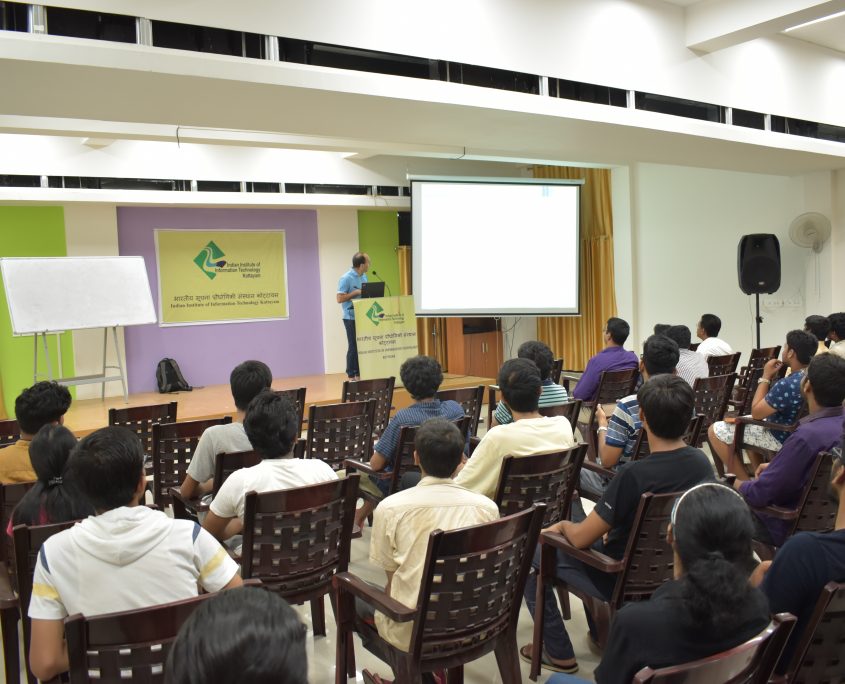Authors: Abdelhak Bentaleb, Christian Timmerer, Ali C. Begen, and Roger Zimmermann
Abstract: HTTP adaptive streaming (HAS) with chunked transfer encoding can be used to reduce latency without sacrificing the coding ef- ficiency. While this allows a media segment to be generated and delivered at the same time, it also causes grossly inaccurate bandwidth measurements, leading to incorrect bitrate selections. To overcome this effect, we design a novel Adaptive bitrate scheme for Chunked Transfer Encoding (ACTE) that leverages the unique nature of chunk downloads. It uses a sliding window to accurately measure the available bandwidth and an online linear adaptive filter to predict the available bandwidth into the future. Results show that ACTE achieves 96% measurement accuracy, which translates to a 64% reduction in stalls and a 27% increase in video quality.
Acknowledgment: This research has been supported in part by the Singapore Ministry of Education Academic Research Fund Tier 1 under MOE’s official grant number T1 251RES1820 and the Austrian Research Promotion Agency (FFG) under the Next Generation Video Streaming project “PROMETHEUS”.
Keywords: HAS; ABR; DASH; CMAF; low-latency; HTTP chunked transfer encoding; bandwidth measurement and prediction; RLS.
Link: http://nossdav.org/2019/
Within the scope of the AAU’s young Scientists Mentoring Programme, Andreas Leibetseder is visiting his mentor Oge Marques, Professor at the Department of Computer and Electrical Engineering and Computer Science and Florida Atlantic University (FAU) in Boca Raton, Florida. During his stay over the course of April, he intends to advance in his PhD studies by focusing on the sub-topic of region-based Endometriosis classification in laparoscopic media. He intends to approach this problem by adapting and applying deep learning technologies, profiting from the knowledge and insights of his mentor as well as other students of the local mlab research group (http://mlab.fau.edu/www/). Currently, several work packages have been defined, which include investigating lesion detection approaches on radiological image datasets for application in the endoscopic domain.
The paper “Active Online Learning for Social Media Analysis to Support Crisis Management” was published as an “early access” article in the journal IEEE Transactions on Knowledge and Data Engineering (Q1 in ScimagoJR). The research leading to these results received funding from the EU FP7 Programme under grant agreement no. 261817 and was performed in collaboration with Bournemouth University, UK.
Authors: Daniela Pohl (AAU Klagenfurt, Inst. of Information Technology), Abdelhamid Bouchachia (Bournemouth University, Dept. of Computing, UK), Hermann Hellwagner (AAU Klagenfurt, Inst. of Information Technology)
Abstract: People use social media (SM) to describe and discuss different situations they are involved in, like crises. It is therefore worthwhile to exploit SM contents to support crisis management, in particular by revealing useful and unknown information about the crises in real-time. Read more
Univ.-Prof. DI Dr. Radu Prodan has been invited to be a part of panel discussion on emerging Blockchain and Edge computing technology and paradigms at PAISE (Parallel AI and Systems for the Edge), collocated workshop at the prestigious 33rd IEEE International Parallel & Distributed Processing Symposium, IPDPS 2019 to be held at Rio de Janerio, Brazil (May 20-24 2019).
The paper “Semantics-aware Virtual Machine Image Management in IaaS Clouds” has been accepted for publication at 33rd IEEE International Parallel & Distributed Processing Symposium , IPDPS 2019 to be held at Rio de Janerio, Brazil (May 20-24 2019).
Authors: Nishant Saurabh (Alpen-Adria Universität Klagenfurt), Julian Remmers (University of Innsbruck), Dragi Kimovski (Alpen-Adria Universität Klagenfurt), Radu Prodan (Alpen-Adria Universität Klagenfurt), Jorge G. Barbosa (LIACC, Faculdade de Engenharia da Universidade do Porto).
Abstract: Infrastructure-as-a-service (IaaS) Clouds concurrently accommodate diverse sets of user requests, requiring an efficient strategy for storing and retrieving virtual machine images (VMIs) at a large scale. The VMI storage management require dealing with multiple VMIs, typically in the magnitude of gigabytes, which entails VMI sprawl issues hindering the elastic resource management and provisioning. Nevertheless, existing techniques to facilitate VMI management overlook VMI semantics (i.e at the level of base image and software packages) with either restricted possibility to identify and extract reusable functionalities or with higher VMI publish and retrieval overheads. In this paper, we design, implement and evaluate Expelliarmus, a novel VMI management system that helps to minimize storage, publish and retrieval overheads. To achieve this goal, Expelliarmus incorporates three complementary features. First, it makes use of VMIs modelled as semantic graphs to expedite the similarity computation between multiple VMIs. Second, Expelliarmus provides a semantic aware VMI decomposition and base image selection to extract and store non-redundant base image and software packages. Third, Expelliarmus can also assemble VMIs based on the required software packages upon user request. We evaluate Expelliarmus through a representative set of synthetic Cloud VMIs on the real test-bed. Experimental results show that our semantic-centric approach is able to optimize repository size by 2.2-16 times compared to state-of-the-art systems (e.g. IBM’s Mirage and Hemera) with significant VMI publish and retrieval performance improvement.
The poster “Towards a semantic-centric VMI repository management” has been accepted for presentation at PhD forum event of 33rd IEEE International Parallel & Distributed Processing Symposium, IPDPS 2019 to be held at Rio de Janerio, Brazil (May 20-24 2019)
Authors: Nishant Saurabh (Alpen-Adria Universität Klagenfurt), Radu Prodan (Alpen-Adria Universität Klagenfurt)
Authors: Raimund Schatz (AIT Austrian Institute of Technology), Anatoliy Zabrovskiy (Alpen-Adria Universität Klagenfurt), Christian Timmerer(Alpen-Adria Universität Klagenfurt, Bitmovin Inc.)
Abstract: Omnidirectional video (ODV) streaming applications are becoming increasingly popular. They enable a highly immersive experience as the user can freely choose her/his field of view within the 360-degree environment. Current deployments are fairly simple but viewport-agnostic which inevitably results in high storage/bandwidth requirements and low Quality of Experience (QoE). A promising solution is referred to as tile- based streaming which allows to have higher quality within the user’s viewport while quality outside the user’s viewport could be lower. However, empirical QoE assessment studies in this domain are still rare. Thus, this paper investigates the impact of different tile-based streaming approaches and configurations on the QoE of ODV. We present the results of a lab-based subjective evaluation in which participants evaluated 8K omnidirectional video QoE as influenced by different (i) tile-based streaming approaches (full vs. partial delivery), (ii) content types (static vs. moving camera), and (iii) tile encoding quality levels determined by different quantization parameters. Our experimental setup is characterized by high reproducibility since relevant media delivery aspects (including the user’s head movements and dynamic tile quality adaptation) are already rendered into the respective processed video sequences. Additionally, we performed a complementary objective evaluation of the different test sequences focusing on bandwidth efficiency and objective quality metrics. The results are presented in this paper and discussed in detail which confirm that tile-based streaming of ODV improves visual quality while reducing bandwidth requirements.
Index Terms: Omnidirectional Video, Tile-based Streaming, Subjective Testing, Objective Metrics, Quality of Experience
Acknowledgment: This work was supported in part by the Austrian Research Promotion Agency (FFG) under the Next Generation Video Streaming project “PROMETHEUS”.
Prof. Radu Prodan visited the Indian Institute of Technology Kottayam.

The Institute of Information Technology at the Alpen-Adria-Universität Klagenfurt invites applications for Post-Doctoral Research Positions (100% employment) within the Christian Doppler (CD) Pilot Laboratory ATHENA “Adaptive Streaming over HTTP and Emerging Networked Multimedia Services” ATHENA-JobApplication PostDoc








